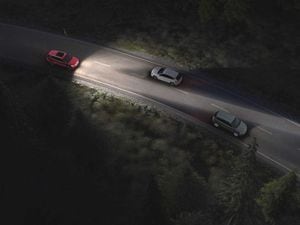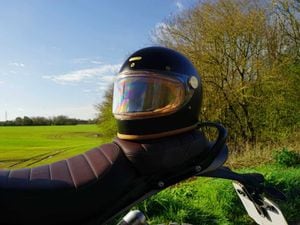How to stay safe when driving in the dark
Here’s how to keep safe on the road as the winter nights roll in.

The clocks have turned back and as winter rolls on we’re heading towards the shortest day of the year.
It means that thousands of drivers across the UK could find themselves finishing work after dark, with many having only driven during the day during summer, especially with habits changing during the Covid-19 pandemic.
Official figures show that injuries and deaths on the road go up when the clocks change.
With this in mind, here’s a handy explainer for those who might need a quick refresher on driving after dark.
Using your headlights
It’s to remember that headlights aren’t only for you to see where you’re going, they’re also useful to help others see you.

Around dusk, it’s always worth popping your headlights on – especially if you drive a dark-coloured car – to make it easier for others to see you.
Also, make sure you use your lights appropriately. When driving around other cars, keep your dipped beam on, reserving full beam for when no other cars are ahead of you, otherwise they’ll really struggle to see.
Finally, double check you’re not just driving with your daytime running lights on. If you’re in a well-lit area you might not realise your dipped beams aren’t on, which can be dangerous if you suddenly enter an unlit area and can’t see the road ahead.
Keep your windows clear
This is a particularly useful general winter driving tip, as there’s more muck on the road that can coat your windows. The low winter sun can then highlight this and make it difficult to see ahead.
The same issue can apply at night. Being able to see clearly is extra important after dark, so dirty windows that are being hit by other car headlights could severely impact your view of the road ahead.

Pay extra attention to cyclists and pedestrians
When driving at night, it can be more difficult to spot people and cyclists out on the road. Cyclists in particular should be illuminated but you should always be alert for that one rider who’s going without lights.
Pedestrians, too, can be tough to spot, especially if they’re wearing darker clothing. Keep an eye out for people who might be looking to cross the road without paying too much attention.
Wearing glasses
Crystal clear vision is even more important at night, so if you find you’re struggling it could be worth getting an eye test.
If you already have glasses, or you’re considering getting them, make sure to ask for anti-glare and anti-reflective lenses. These can make a big difference if you’re regularly driving at night.

They help to minimise reflection and glare caused by headlights and street lights, which can be very distracting.
Don’t drive tired
Finally, this might just be the most important thing to remember in this list. Road safety charity Brake says that driving tired could be as dangerous as drink-driving, accounting for between 10 and 20 per cent of all crashes.
Brake says driving tired is a much bigger problem in the morning and early afternoon when our body clocks enter a natural dip in energy, but it’s important to be aware of at all hours, especially after dark.





